Millets
Millets refer to a variety of small-grained, warm-weather, drought resistant, annual cereals that are widely cultivated in many parts of the world for use as food and fodder. Millets have been an important staple in parts of Asia and Africa for centuries. These grains are called nutritious grains or nutri-cereals due to their amazing nutritional composition.
India is a leading consumer, producer and exporter of nutri-cereals in the world. India, Niger and China together account for more than half of the global production.
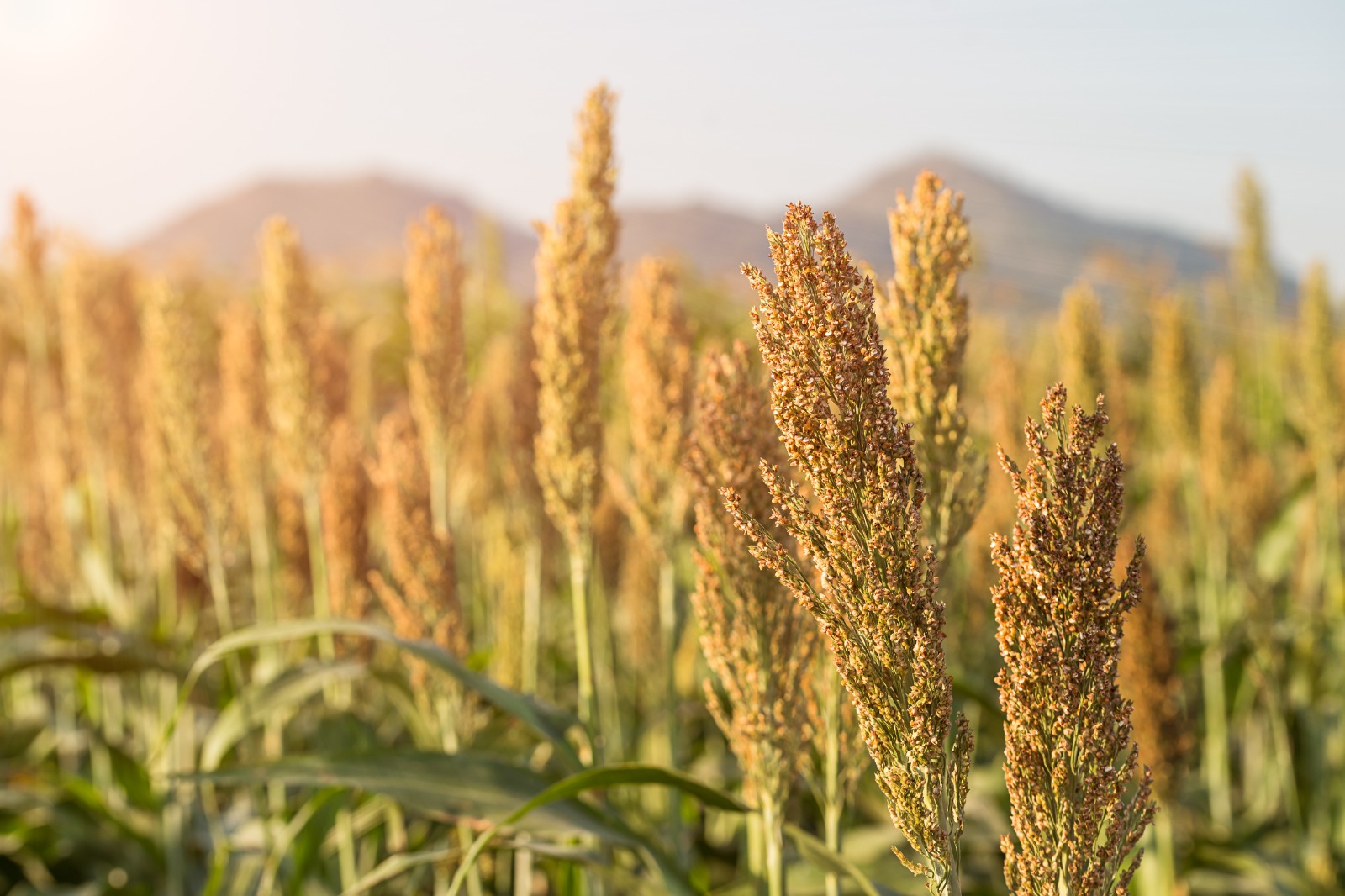
Millets are a rich source of protein, fibre, minerals, iron, calcium and have a low glycemic index. These nutri-cereals are suitably cultivated in arid and semi-arid land areas having low rainfall (200-600 mm). These grains are known for characteristics like drought resistance, photo-insensitivity, resilience to climate change, etc. Besides consumers, these nutri-cereals are being increasingly favoured by the farmers as these grains are climate-friendly and drought resistant crops and can be grown in infertile soil conditions.
Millets are found to be gluten-free and are considered good food for people having diabetes. These grains are loaded with vitamins, minerals and phytochemicals.
Climatic Requirements
Millets are predominantly warm-season crops and are well-suited to dryland and rainfed farming systems. Optimal growth occurs between 25°C and 35°C. Most millets are tolerant to high temperatures. Millets require moderate rainfall ranging from 300 mm to 600 mm annually. However, some varieties can grow with even less rainfall. They can be grown from sea level to elevations of 2,000 meters, depending on the variety.
Soils
Millets grow well on sandy loam, loamy and well-drained alluvial soils. Some millets tolerate slightly alkaline or acidic soils. Well-drained soils are essential as waterlogging can adversely affect crop growth.
Sowing Time & Methods
Kharif Season (Main season): June to July, with the onset of monsoon.
Rabi Season: October to November (in southern States like Tamil Nadu and Karnataka for millets like finger millet).
Summer Season: February to March (in limited irrigated areas).
Broadcasting method of sowing is common in traditional farming in which seeds are scattered manually. Line sowing is preferred for better crop management. Seeds are sown in rows using seed drills or manually, ensuring proper spacing.
Growing States
- Pearl Millet (Bajra) in Rajasthan, Maharashtra, Gujarat, Uttar Pradesh and Haryana.
- Finger Millet (Ragi) in Karnataka, Tamil Nadu, Odisha, Maharashtra, Uttarakhand and Jharkhand.
- Sorghum (Jowar) in Maharashtra, Karnataka, Madhya Pradesh, Telangana and Andhra Pradesh.
- Foxtail Millet in Andhra Pradesh, Telangana, Tamil Nadu and Karnataka.
- Little Millet, Kodo Millet and Barnyard Millet in Madhya Pradesh, Chhattisgarh, Jharkhand, Odisha and the northeastern states.
Varieties
Various varieties of millets are grown in India, viz., Jowar (Sorghum), Bajra (Pearl millet), Ragi (Finger millet), Sawa (Barnyard millet), Cheena (Proso millet), Kangni (Foxtail millet), Kodo (Kodo millet), Kutki (Little millet).
Jowar (Sorghum)
Sorghum is a rainfed staple cereal grown in the semi-arid and arid land areas of India. It is a staple human food as well as an important fodder for animals. Sorghumis cultivated during rainy (kharif) and post-rainy seasons. The kharif Sorghum is grown between the months of July and October while rabi Sorghum is grown during October-February. Maharashtra, Karnataka, Madhya Pradesh and Andhra Pradesh are the major Sorghum growing States in the country. Soils with clay loam or loam texture having good water-retention capacity are most suited for Sorghum cultivation.
Bajra (Pearl millet)
India is the largest producer of Pearl millet in the world with 8.75 million hectares of marginal and sub-marginal land area under its cultivation. This important rainfed crop is primarily grown in Rajasthan, Gujarat, Haryana, Uttar Pradesh and Maharashtra. Warm dry climate with adequate soil moisture is suitable for Pearl millet. Loamy sands to well-drained loams free from salinity and alkalinity are ideal for the crop. Pearl millet is a grain rich in minerals, protein, essential amino acids and fat content.
Small millets
Small millets include six small-seeded crops, viz., finger millet, foxtail millet, porso millet, kodo millet, little millet and barnyard millet. These are primarily rainfed crops grown in an area of 2.29 million hectares in India with Finger millet occupying the largest area (1.6 million hectares). Small millets are well suited to diverse agro-climatic conditions of soil, temperature and altitudes and are thus grown at the sea-level in the south to the hills in Uttarakhand and North-east.
Water Management
Millets are drought-tolerant and typically grown under rainfed conditions, requiring minimal irrigation. One or two irrigations may be needed during prolonged dry spells, especially at critical growth stages such as tillering, flowering and grain filling. Techniques like mulching, contour bunding and use of organic matter help retain soil moisture. Rainwater harvesting and farm pond systems are also encouraged in millet-growing areas to support supplemental irrigation.
Weed Control
Besides manual, mechanical weeding and taking the help of organic mulches, an effective weed control in millets include applying pre-emergence herbicides like Atrazine (0.5 to 1.0 kg/ha) or Pendimethalin immediately after sowing for some millet varieties. Post-emergence herbicides are used cautiously, depending on the millet variety and weed type.
Glimpses of our Social Media Posts
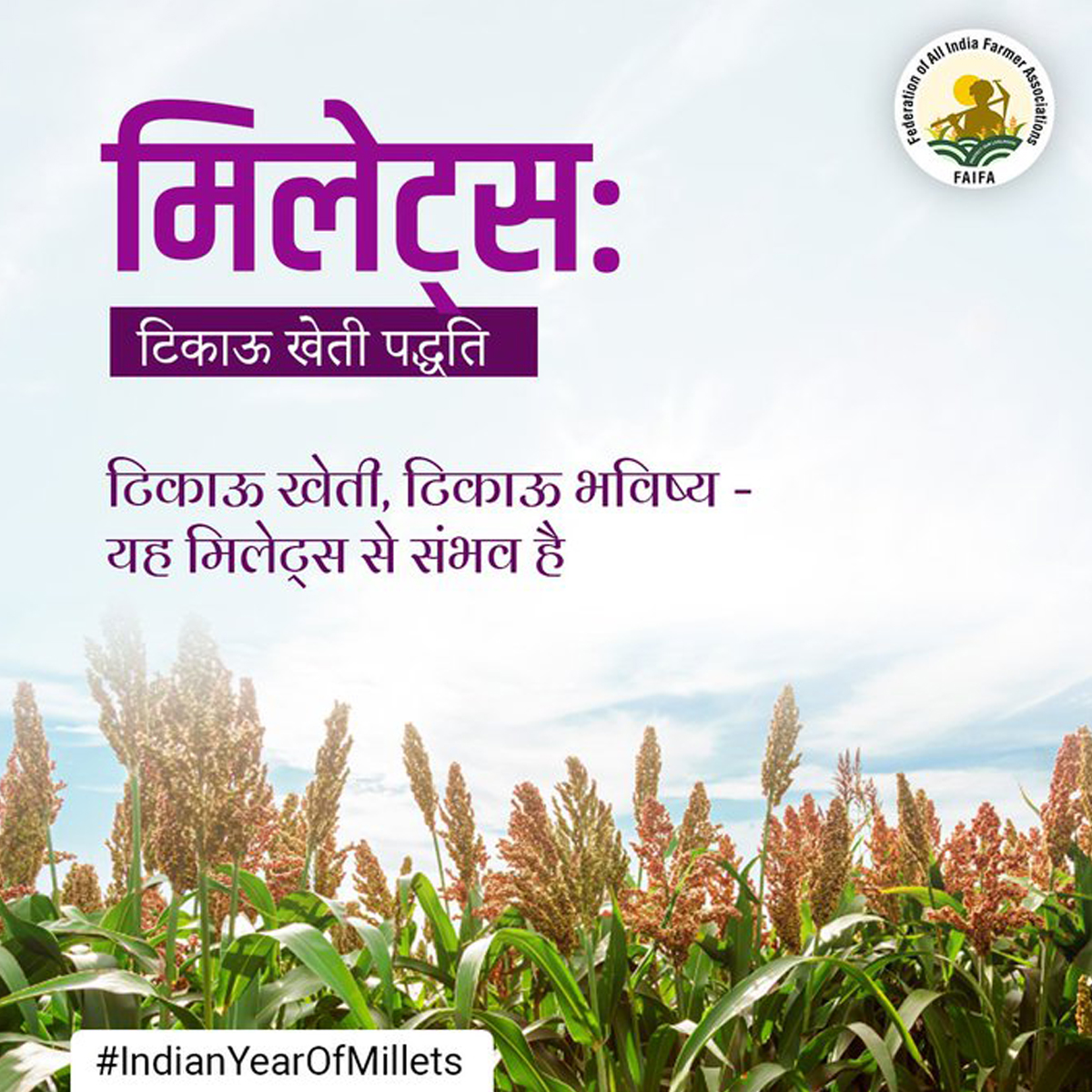
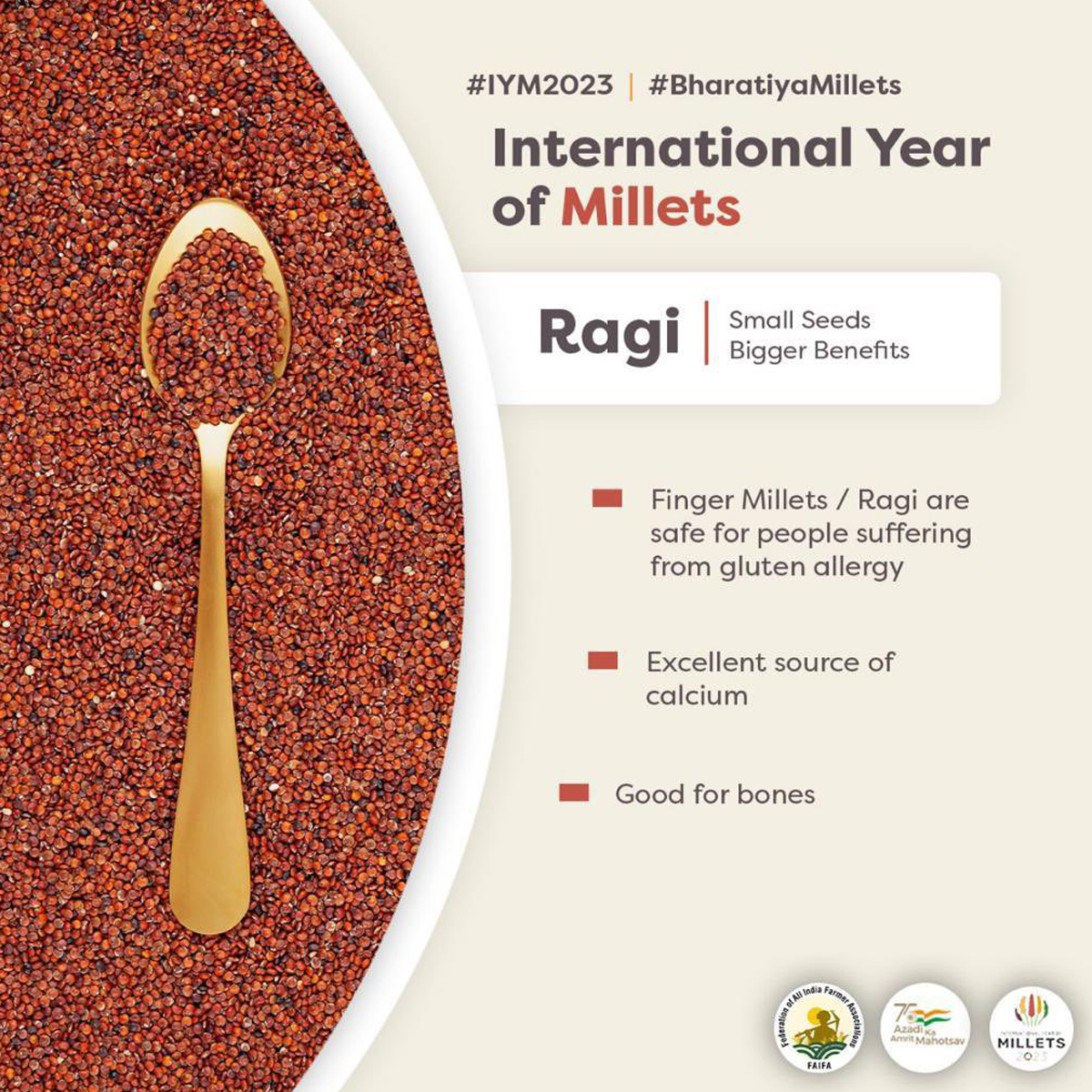
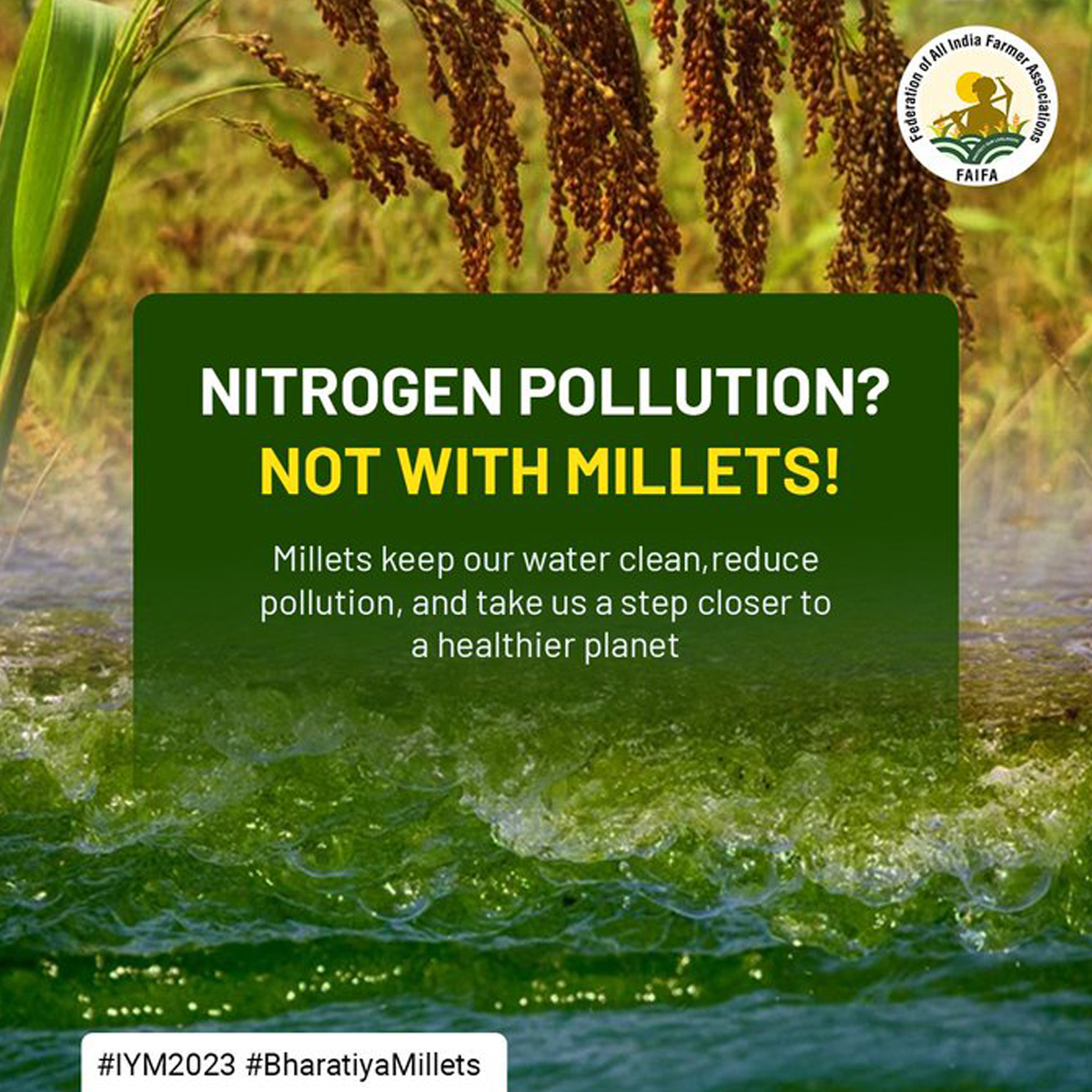
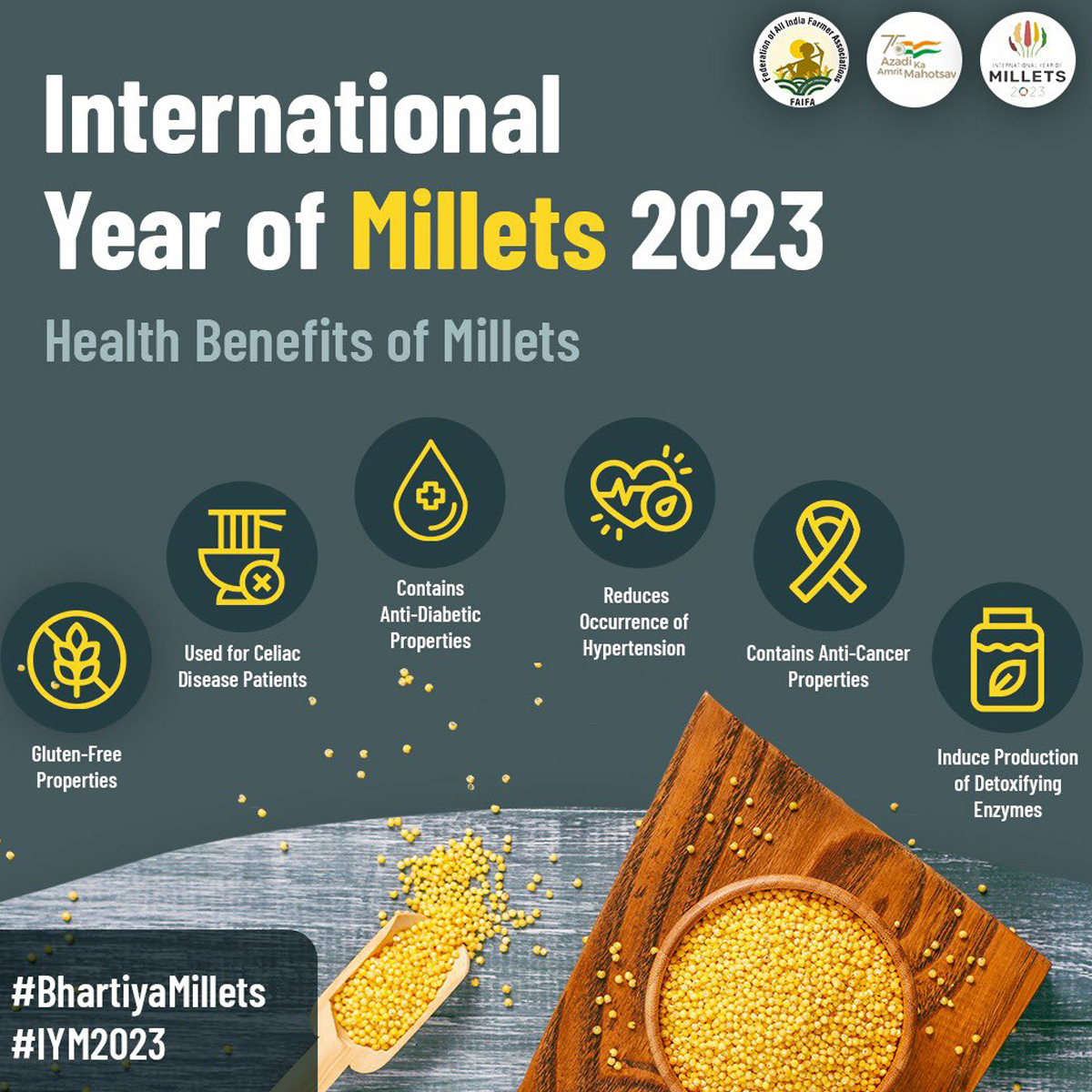
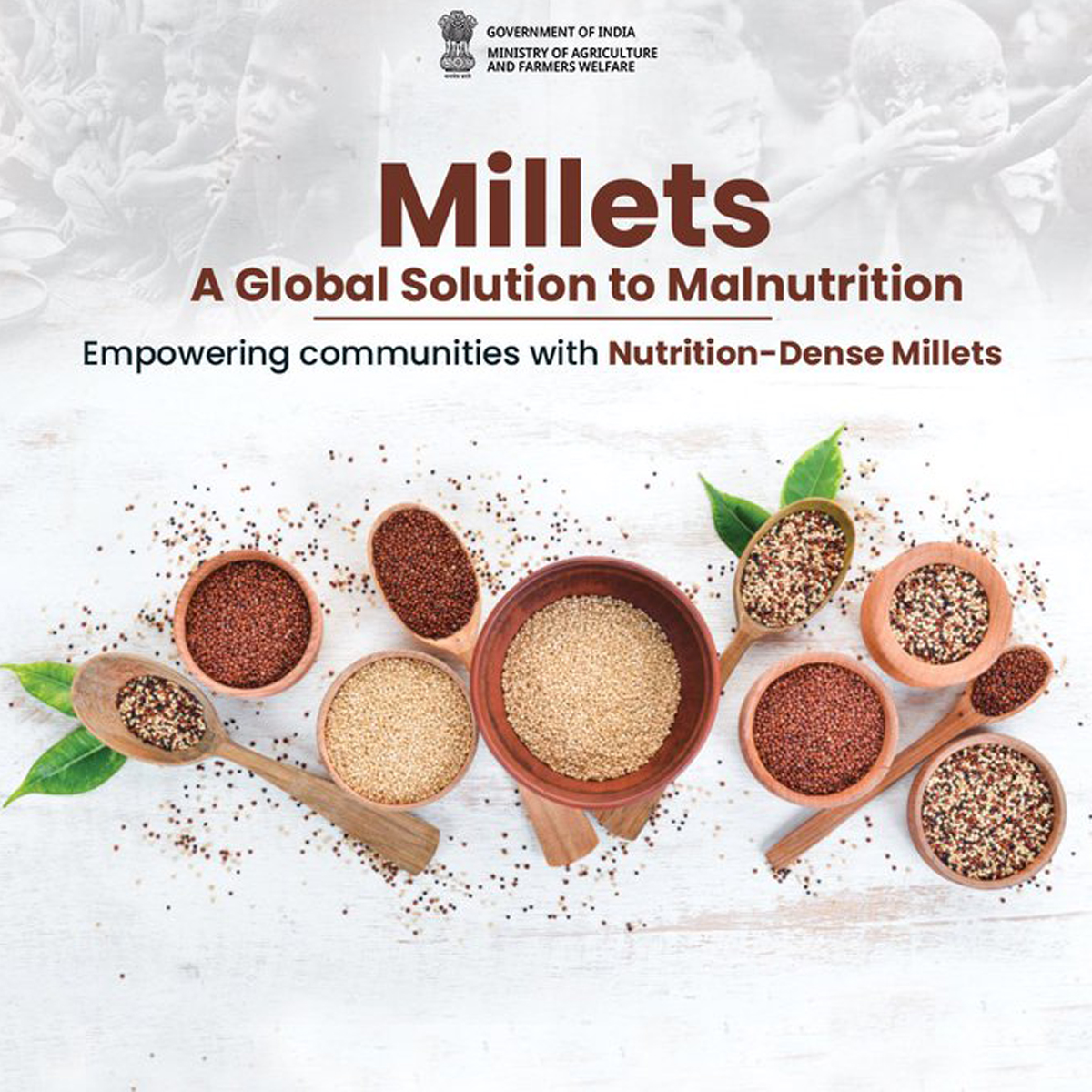





<h5 class=”mb-0″ style=”text-align: center; padding: 0.05px; </h5>
Millets– All India Area and Production
|
|
2019-20 |
2020-21 | 2021-22 | 2022-23 | 2023-24 |
| Area (Million Hectares) |
8.4 | 9.0 | 9.3 | 8.5 | 9.2 |
| Production (Million Tonnes) |
10.2 | 12.5 | 13.2 | 11.8 | 13.5 |
Source: Food and Agricultural Organization, United Nations (FAOSTAT)
Millets Export from India
|
|
2019-20 |
2020-21 | 2021-22 |
2022-23 |
2023-24 |
|
Value |
308.21 | 317.39 | 340.35 | 460.63 | 466.20 |
Source: Department of Commerce, Ministry of Commerce and Industry, Govt. of India
https://tradestat.commerce.gov.in
India, a key global producer of millets, plays a vital role in the international millet trade. The country’s top export destinations include Libya, Tunisia, Morocco, UK, Yemen, Oman, and Algeria. Currently, India exports millets to 139 countries worldwide.
References:
- Handbook of Agriculture, Indian Council of Agricultural Research, Ministry of Agriculture and Farmers’ Welfare, GoI
- Textbook of Field Crops Production: Foodgrain Crops, Volume-I, Indian Council of Agricultural Research, Ministry of Agriculture and Farmers’ Welfare, GoI
- India Global Millets Forum-ICFA: https://icfa.org.in/assets/img/souvenirs/GLOBAL%20MILLETS%20FORUM.pdf
